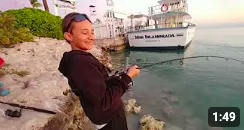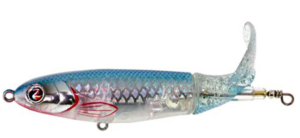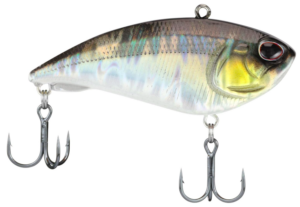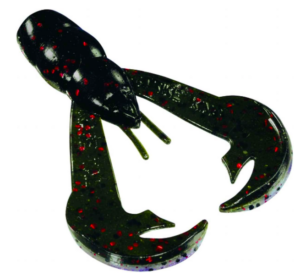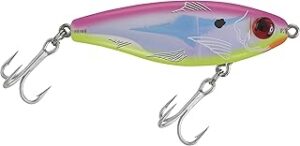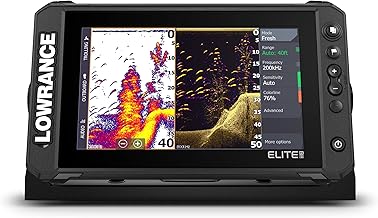Tuna are some of the more popular ocean-dwelling fish. This fish is in high demand among commercial fishermen and sport anglers. Tuna are extremely fast swimmers that put up a tremendous fight and they also taste great on the dinner table.
Tuna Fishing in the Amelia Island Area
In the offshore waters off of Amelia Island, it is around 70 miles out to the Gulf Stream. With it being so far, you won’t find nearly as many charters that will be targeting tuna out here, however, it is possible to catch them if you are willing to travel to find them. Some anglers will fish for them, but it can definitely be hit or miss.
Take a look below to learn about the different types of tuna.
Albacore Tuna
These fish are found in schools that can sometimes number in the thousands. Albacore tuna are often found on temperature breaks that can be hard to find. Anglers usually start off by trolling for these fish until they locate the schools. Fishing for schooling Albacore tuna can be very exciting. It is common to have tuna hit every single rod that is being trolled all at once. You will know when you find a school of Albacore tuna because the rods get bent over in a hurry. It is very possible to have a dozen fish on at once if you have that many rods in the water. If you don’t find the schools though, fishing will be tough.
Learn More About Albacore Tuna
Atlantic Bonito
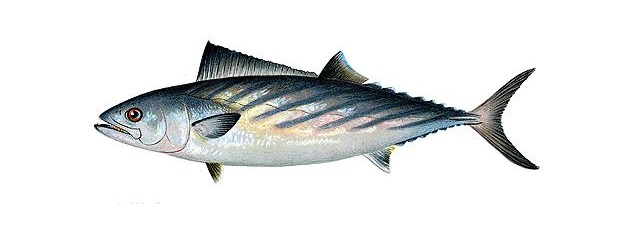
The Atlantic bonito is a fish that travels in huge schools within 20 miles of the shoreline. It is located in the southern Atlantic and the Gulf Coasts year round and in the northeast during the summer when waters are warmer. Fishermen with smaller boats usually target the Atlantic bonito. A surface feeder, the Atlantic bonito usually averages from 3 to 8 pounds. Most anglers prefer trolling for these fish. Because they are surface feeders, you want to keep your bait just below the surface while trolling. A 3 or 4 ounce sinker at about a 5 knots trolling speed should keep your lures at the proper depth. You have to be able to adjust your trolling speed or your set up to make sure that you are trolling at the proper depths. Spoons and feather jigs work best for Atlantic bonito. Chumming can also be effective, but it can be challenging at times. They will often feed on the chum, but refuse to eat any of the baits that are set up with hooks. Using lighter line and small hooks are a must. By burying the hook completely into the bait, you will have a much better chance of fooling the Atlantic bonito.
Learn More About Atlantic Bonito
Blackfin Tuna
The smallest of all tunas, blackfin tuna rarely reach 30 pounds. They are found in the warmer waters of the western Atlantic. They can be caught offshore, but they will also move inshore and stack up along reefs and ridges where there is plenty of bait fish.
Blackfin tuna are usually caught by accident while fishing for other types of fish such as marlin and larger kinds of tuna. Any lures intended for billfish and big tuna will also catch blackfin tuna. Trolling skirts and spoons, jigs, and trolling feathers are all effective for catching blackfin tuna. Trolling and chumming will work for catching these fish. They are one of the best-tasting tunas available.
Learn More About Blackfin Tuna
Bluefin Tuna
While bluefin tuna have been extremely over fished commercially, there are still bluefin tuna available for sport fishing. Most areas are restricted by limited seasons as well as size and catch limits.
Bluefin tuna can be caught on trolling spoons, trolling feathers, jigs, and plastic-skirted jigs. Schooling tuna are attracted to the wake of the boat, so it is best to keep your trolled baits close to the wake. Chumming also works for schooling bluefin tuna. Ground menhaden, butterfish, herring or mackerel will all work for chumming. Bluefin tuna are excellent for eating.
Little Tunny (False Albacore)
Little Tunny, also called false albacore, resemble the Atlantic bonito, skipjack tuna and species of mackerel. The little tunny are known as a highly migratory species and they feed primarily on pelagic fish. Little tunny are considered a trash fish by many anglers because of their poor taste.
Pacific Bonito
Pacific bonito can grow to about 25 pounds, although they are usually much smaller. These fish are found inshore to about 100 miles offshore from northern Vancouver Island to Chile. It usually travels in schools and they feed on fish and squid. Trolling and still fishing will both work well for Pacific bonito.
Learn More About Pacific Bonito
Skipjack Tuna
The Skipjack Tuna is a coastal pelagic schooling species that is found near offshore reefs. Often confused with bonito, skipjack tuna are dark blue or purple on the back and silvery on their lower sides and belly. They have three to five prominent, dark longitudinal bands on their lower sides. These tuna have fine, slender teeth, a strong median keel on the caudal fin base between two small keels, and barely separated first and second dorsal fins. Skipjack tuna are a lot of fun to catch, although, many anglers only fish for skipjack tuna to use them for bait when fishing for much larger fish such as bigger tuna and billfish. Trolling is the most common method for catching skipjack tuna.
Learn More About Skipjack Tuna
Yellowfin Tuna
Yellowfin tuna are the most popular type of tuna. They grow very large with some fish over 300 pounds. Average fish are around 50 to 60 pounds. They can be found in offshore waters in the Atlantic, Gulf and Pacific.
Trolling is the most popular method for catching yellowfin tuna. Trolling is so effective because these fish hang out in huge schools. You have to cover lots of water to find these schools. Once you hook a fish, it gets very exciting. Anglers usually stop trolling and get out the chum lines. On the Atlantic coast, chunks of butterfish and menhaden are used for chum. On the Pacific coast, live anchovies and sardines are the preferred bait for chumming. As the trolled fish are brought aboard, anglers typically use anchovies, butterfish and squid to start catching yellowfin tuna. The action is very fast once you have located the school of tuna. Some anglers continue to troll instead of using chum lines. When you troll through a school, it’s possible to have a fish on every trolled rod at once. It’s so exciting that some anglers don’t even bother to stop and chum. They will troll through the school until the fish stop feeding. Both methods work. It just depends on your personal preference. Yellowfin tuna taste excellent and the meat holds its flavor well when frozen.



